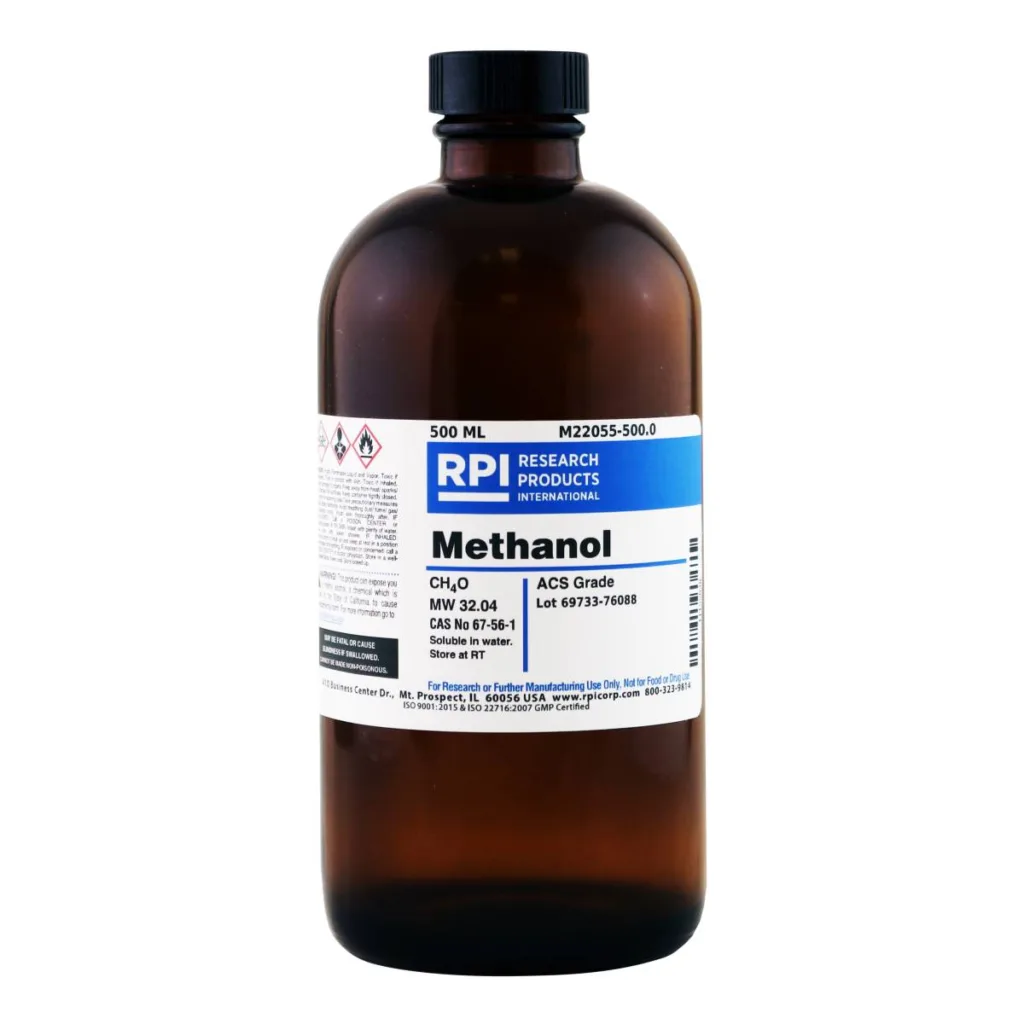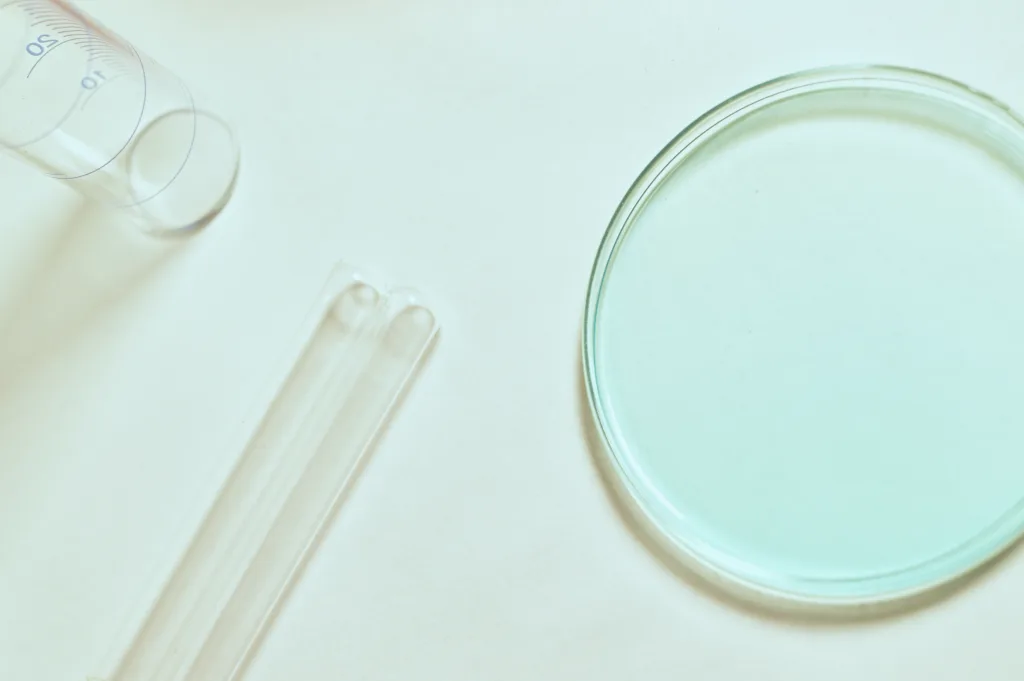Methanol, also known as methyl alcohol, is a chemical compound with the formula CH3OH. It is a colorless, flammable liquid with a slightly sweet odor. The question whether methanol is polar or nonpolar is of significant importance in the field of chemistry as it determines its physical and chemical properties.
To determine the polarity of methanol, we must first understand what polarity means. In chemistry, polarity refers to the distribution of electric charge in a molecule. A polar molecule has a net electric dipole moment due to the unequal distribution of electrons between the atoms in the molecule. On the other hand, a nonpolar molecule has a symmetrical shape and no net electric dipole moment.
Methanol has a bent shape, with the oxygen atom at the center and the carbon and hydrogen atoms arranged around it. The oxygen atom has a higher electronegativity than the carbon and hydrogen atoms, whch means it attracts electrons more strongly. As a result, the oxygen atom pulls the electrons towards itself, creating a partial negative charge.
Furthermore, the C-O bond in methanol is polar because the oxygen atom is more electronegative than the carbon atom. This creates a partial positive charge on the carbon atom and a partial negative charge on the oxygen atom. The O-H bond in methanol is also polar due to the electronegativity difference between oxygen and hydrogen atoms.
Therefore, methanol is a polar molecule due to the presence of a net electric dipole moment caused by the asymmetric arrangement of atoms and the polar bonds between them. The negative end of the net electric dipole moment points towards the oxygen atom, making it a polar molecule.
The polarity of methanol has significant implications for its physical and chemical properties. Polar solvents like methanol dissolve polar solutes such as salts, acids, and some organic compounds. Methanol is also highly miscible with water due to its polarity, making it useful as a solvent in various chemical processes.
Methanol is a polar molecule due to the presence of a net electric dipole moment caused by the asymmetric arrangement of atoms and the polar bonds between them. Its polarity has significant implications for its physical and chemical properties, making it useful as a solvent in various chemical processes.
Why The Methanol Is Polar?
Methanol is a polar molecule due to its asymmetric shape and the presence of electronegative Oxygen atom. In detail, Methanol is composed of a Carbon atom covalently bonded to thre Hydrogen atoms and an Oxygen atom. The Oxygen atom has a higher electronegativity than Carbon and Hydrogen, attracting the shared electrons towards itself and creating a partial negative charge. This creates a dipole moment, with the negative end of the net electric dipole moment pointing towards the Oxygen atom. Additionally, Methanol has a bent shape due to the lone pair of electrons on the Oxygen atom, which further enhances its polarity. Thus, Methanol is a polar molecule.

How Polar Is Methanol?
Methanol is a polar solvent, with a relative polarity of 0.762. This means that it has a moderate level of polarity compared to other solvents. Other solvents with similar relative polarities include ethanol, which has a relative polarity of 0.654, and ethylene glycol, which has a relative polarity of 0.79. On the other hand, solvents such as hexane and carbon tetrachloride are nonpolar solvents, with relative polarities of 0.008 and 0.139, respectively. methanol has a moderate level of polarity, making it a useful solvent for dissolving polar compounds.
Is Methanol Polar Or Nonpolar Solute?
Methanol, also knon as methyl alcohol or CH3OH, is a polar compound. This is due to the polarity of the C-O bond in methanol, which is not opposed by any other dipole moments. The oxygen atom in methanol has a higher electronegativity than the carbon and hydrogen atoms, resulting in a separation of charge within the molecule. This separation of charge leads to a partial negative charge on the oxygen atom and partial positive charges on the carbon and hydrogen atoms.
Because methanol is a polar compound, it can dissolve in polar solvents such as water. This is because polar solvents are able to interact with the partial charges on the methanol molecule, allowing it to dissolve. The adage “like dissolves like” holds true for polar solvents and polar compounds.
Methanol is a polar solute due to the polarity of the C-O bond within the molecule.
Is Methanol As Polar As Water?
Methanol is not as polar as water. The polarity of a molecule is determined by the distribution of electrons between its atoms. In water, the oxygen atom is much more electronegative than the hydrogen atoms, wich results in a polar covalent bond. The oxygen atom attracts the shared electrons more strongly, creating a partial negative charge. Conversely, the hydrogen atoms have a partial positive charge. This separation of charges gives water its high polarity.
Methanol, on the other hand, has a polar C-O bond, but the methyl group attached to it is essentially non-polar. This makes methanol less polar than water since the non-polar methyl group has a lower electronegativity than the oxygen atom. Additionally, the O-H bond in methanol is less polar than the O-H bond in water due to the presence of the methyl group.
Water is more polar than methanol due to the higher electronegativity of the oxygen atom and the absence of a non-polar group.

Conclusion
Methanol is a polar molecule. The dipole-dipole moment cancels out in a nonpolar molecule, giving it a symmetrical shape. However, because methanol has a bend in its shape, it forms an asymmetric structure, with the negative end of the net electric dipole moment pointing towards the Oxygen atom. This results in methanol having an overall polarity. Methanol contains an essentially non-polar methyl group, and the C-O bond is less polar than the O-H bond. Polar solvents dissolve polar compounds, and methanol being a polar molecule, dissolves polar compounds effectively. Therefore, the polarity of methanol plays a crucial role in its properties and applications in varous fields like chemistry, biology, and industry.
